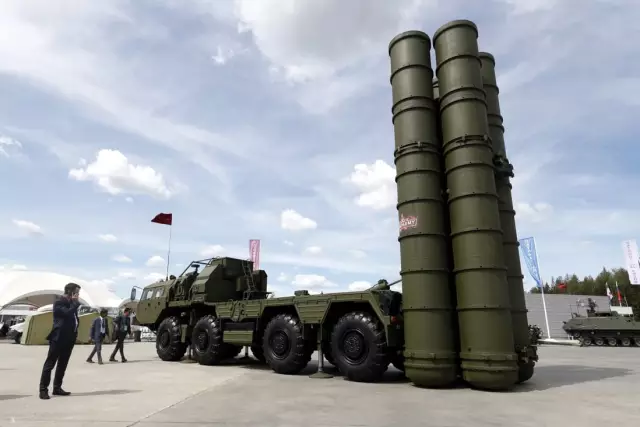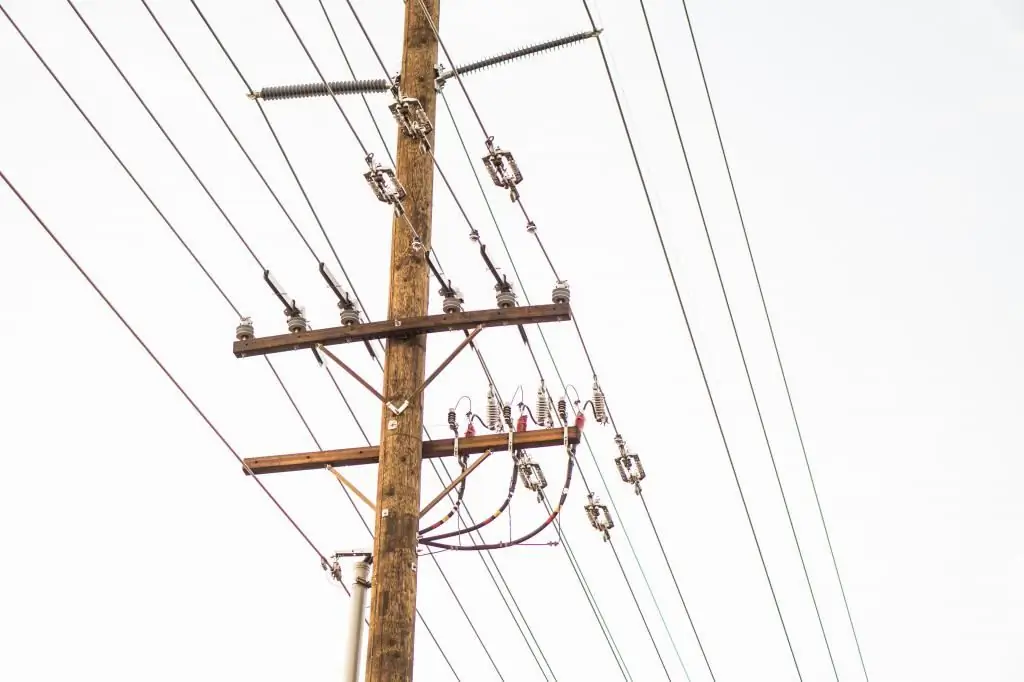2026 Author: Howard Calhoun | [email protected]. Last modified: 2025-01-24 13:10:25
The concept of a "clean aircraft" provides for the need to completely clean its surface from ice, snow and any other contaminants. This is due to the extreme sensitivity of the aerodynamic properties of the aircraft even to minor changes in the geometric parameters of the fuselage and wing. In addition, icing can cause complete or partial blocking of the steering surfaces. All this is fraught with extremely undesirable consequences. To prevent these phenomena, the relevant regulations provide for the treatment of aircraft with anti-icing liquid before departure.

Causes of ice formation
At temperatures close to negative values, crystallization of water in the atmosphere occurs. This may occur in the form of frost or ice crystals deposited on the surface of the aircraft. Sometimes this is a consequence of precipitation, mostunpleasant of which are the so-called freezing rains. Often moisture gets on the surface of the machine during taxiing at the airport. To combat this natural phenomenon, anti-icing fluids are used or mechanical cleaning of the aircraft, which is a rather laborious and lengthy process. However, in military aviation, it is still the main method and is the responsibility of the crew.

What are liquids
There are four types of anti-icing fluid. Standardly, their type is indicated by Roman numerals from the first to the fourth. Below is a brief description of these fluids:
- Type I does not contain thickeners (unlike other types), does not have a protective effect, is applied only when hot and serves only to clear snow, dirt and ice. Color red-orange.
- Type II contains thickeners and at least 50% ethylene glycol, but is only able to provide protection against re-icing for a short period of time. Has shades of yellow.
- Type III is similar to type II, but there is even less thickener. This type is used to handle low speed aircraft. Colorless.
- Type IV contains a high concentration of thickener and provides long-term protection against re-icing. Has an emerald green color.
All liquids are used diluted with water, the water content in the liquid for each type is strictly regulated and depends on weather conditions. Temperaturefreezing of the liquid must be at least 10 degrees lower than the ambient temperature. At the same time, it is strictly forbidden to mix anti-icing fluids of different types with each other. It is also forbidden to mix liquids of the same type, but from different manufacturers. At civil airfields, the main type is Type IV fluid.

Regulations
In Russia, GOST R54264-2010 is in force, describing the methods and procedures for applying anti-icing fluid for aircraft. The provisions of this GOST are unified with the international standards ISO 11075 and ISO 11078. The current world practice provides for the mandatory testing of all anti-icing fluids in special laboratories and the publication of lists of fluids allowed for use. Such publications are in the public domain. In Russia, this is done by the Federal Air Transport Agency. For the current autumn-winter period, the following fluids are allowed for use: type I - Arktika DG, Safewing EG I 1996 (88), AVIAFLO EG (AVIAFLO EG), OCTAFLO EG, Oktaflo Lyod, DEFROST EG 88.1. For type II, only one fluid is approved for use: Safewing MP II FLIGHT. Type III is not used at Russian airports, since this type is not on the list of the Federal Air Transport Agency. For Type IV, Safewing MP IV LAUCH, Max Flight Sneg, Max Flight 04, Max Flight AVIA and Safewing EG IV NORT can be used.

Processing types
Two applybasic type of aircraft pre-flight treatment. Under favorable conditions, they are limited to cleaning the aircraft in one stage. This is usually done before the aircraft is ready for passengers to board. Snow and other deposits are simply removed from the aircraft using Type I de-icing fluid. In cases where there is an increased risk of icing surfaces, the treatment is carried out in two stages. First, in the manner already described, and then, immediately before take-off, they are treated with type II, III or IV anti-icing fluid. The decision to carry out the processing is made jointly by the aircraft commander and the airport controller. Moreover, if one of them is for, and the other is against, processing is still performed.

Producers
Formally, aircraft de-icing fluids do not have a very complex chemical composition and do not require special high-tech facilities for production, but the entry ticket to this market is quite expensive. The need for accreditation, passing multi-stage tests, surrounded by strong competitors with many years of experience and reputation - all this makes it very difficult for new manufacturers to enter the market.
Currently, the main brands are American and Canadian Killfrost, Safewing, Octaflo, Maxflight. Recently, the products of the German company Clarion have been noticeable. Of the domestic brands, one can name liquid type I "Arktika". As can be seen from the list of liquids allowed for use above, domesticthe manufacturer is allowed to produce only type 1 anti-icing fluid. At the same time, Russian enterprises operate in the country, producing products of Western brands under a license and obtained technologies. In particular, this is the Moscow-based ZAO Octafluid, which works together with the Americans, as well as the Nizhnekamsk firm Arkton. The volume of consumption of liquids of all types in Moscow airports alone is estimated at 12,000 tons per year. Therefore, the stock of anti-icing liquids at the airport should be large enough.
Processing equipment
For the processing of aircraft, special machines are used on the platform of trucks. They are equipped with telescopic rods with swivel nozzles for spraying anti-icing fluid. The operator's cabin is equipped with a heating device, and the machine itself is equipped with sensors and signal lighting, allowing you to get as close as possible to the aircraft without hitting it. Separate spray hoses are available for hard-to-reach areas, such as the underside of an aircraft.
Processing the aircraft with anti-icing liquid serves solely to protect the machine on the ground, until takeoff, when the remnants of this liquid are blown away by the oncoming air flow. In the future, directly in flight, each aircraft uses its standard anti-icing systems.

Air crashes
Despite the fact that the phenomenon of aircraft body icing has long been well studied, due todisregard for aviation safety crashes continue to occur. Some of them are the crash of the CRJ Belavia aircraft in Yerevan in 2008, the crash in Sochi in December 2016 and the most recent crash of the An-148 aircraft this year. Therefore, the dissatisfaction of passengers caused by a delay in departure due to the need for anti-icing treatment, to put it mildly, is not justified.
Recommended:
Rapeseed meal: description, application, overview of manufacturers

Rapeseed meal is a valuable feed and is often introduced into the diet of various types of farm animals. The peculiarity of this product is, first of all, that it contains a lot of easily digestible biologically active protein
Aluminum composite panels: overview, description, manufacturers and installation features

Aluminum composite panels, the price of which will be written below, are mainly used when finishing buildings, houses and structures from the outside using a special ventilated facade technology. Such material can also act as an element of washable and wear-resistant finishing for various public places, for example, medical institutions, airports, restaurants and cafes, railway stations, bus stations
Anti-aircraft missile system. Anti-aircraft missile system "Igla". Anti-aircraft missile system "Osa"

The need to create specialized anti-aircraft missile systems was ripe during the Second World War, but scientists and gunsmiths from different countries began to approach the issue in detail only in the 50s. The fact is that until then there simply were no means of controlling interceptor missiles
Cable manufacturers: types of cable, list of manufacturers, rating of the best, product quality, addresses and customer reviews

Cable is such a demanded product that it is manufactured in any state. Wires are found in rooms, the ground, industrial facilities and even air. If a country is not able to guarantee itself a similar product, it is worthless. The article deals with domestic cable manufacturers
Glass matting paste: an overview of the best manufacturers and application features

Mattifying glass pastes are produced today by many companies. Most of the products of this type supplied to the market are of good quality. But the most popular brands of pastes in Russia are still Aqua-Color, Sammaker, Velvet Class

